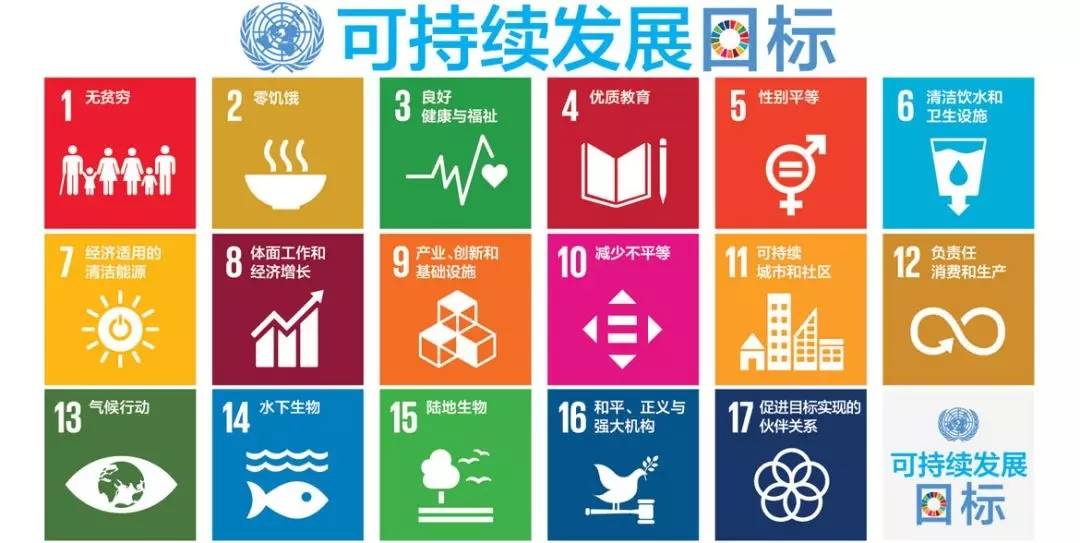 12.05 / 2019
12.05 / 2019
 24
24
The global issues that we face today can seem overwhelming — too much for any person, any one organization, or any one government to tackle. As we size up the global challenges we face — from advancing gender equality to eliminating poverty — it's crucial to recognize that these issues do not exist in silos. For instance, climate change threatens to overturn progress we have made on issues related to health and security. By looking at these challenges holistically, we have a better chance at making progress on a range of issues, including improving access to food and clean water.

What can humans accomplish, collectively, by 2030? Can we eliminate poverty? Hunger? Can we adequately address climate change? How will we track our progress and know that we have accomplished our goals?
That's where the Sustainable Development Goals come in, a framework designed by the United Nations for "peace and prosperity" for both people and the planet.
What Are the Sustainable Development Goals (SDGs)?
The United Nations created a set of 17 distinct but interrelated goals to guide global development between 2015 and 2030. Each goal has a set of targets – 169 altogether – with subsets of indicators – 232 in total. These targets and indicators help funders, investors, organizations, and the UN assess progress and completion of the SDGs.
While each goal has separate targets and indicators, they're all interconnected and stakeholders across many sectors must work together to drive solutions.
The Role of Donors to Address the SDGs
The UN SDGs may seem too lofty for an individual donor to make an impact, but these global problems need all hands on deck. Think of the goals not as a new and different project, but as a framework for the work you're already doing. The goals can be further divided geographically, creating smaller areas for donors, organizations, and governments to address.
These issues can be tackled at many levels: Direct services, research, capacity building, and systems change. Influencing policy is one approach for funders who want to engage in systems change work to create impact.
Donors can use the SDGs to bring clarity and alignment to their work. Rockefeller Philanthropy Advisors provides a starting point for funders who want to orient their work around the SDGs. Organizations can use the SDGs to describe their impact and progress. It may take some time to digest the global undertaking that the UN is working to realize, but the value is becoming clear to many in the philanthropic and business worlds. Donors can catch up on the progress of the SDGs in the SDG Tracker from Our World in Data and in the 2019 report SDG report for the UN.
Evaluation and Accountability
With targets come questions of evidence and accountability. How do we collect the data and information that we need to track progress? Who is responsible for meeting final targets?
One problem: SDG tracking isn't incorporated into common tools used by organizations and governments, according to Erik Arnold, chief technology officer, Microsoft Tech for Social Impact.
"The SDGs are a little bit inaccessible," Arnold said at the Global Washington Goalmakers 2019 conference.
Although the SDGs lack a true accountability mechanism, donors, NGOs, and governments need to hold themselves and each other accountable in addressing global issues and achieving the SDGs.
"At the end of the day, we are trying to change lives," said Diana Fletschner, senior director of research, Monitoring and Evaluation at Landesa.
Accountability must rely on evidence. Effective evaluation is not a given. Learn more about building effective evaluations for the global goals. Impact investors can similarly evaluate the progress driven by investments.
Unfortunately, the current evidence suggests that progress has not been sufficient. Most U.S. states are not meeting SDG standards. While global progress has been made, it has been inequitable. Those most in need have seen the least progress. The 2018 High-level Political Forum, a venue for review of progress, revealed early learnings. This event highlighted ways for governments and NGOs to improve their practices, hopefully encouraging quicker progress in the future. Donors can use this information to better serve their target populations.
Conclusion:
While the SDGs are lofty goals, donors can work to tackle small pieces of these interconnected challenges to improve the world and contribute to the larger solutions. Are you ready to reframe your work around the UN SDGs? Consider the goals, targets, and indicators that can be used to guide your efforts and establish partnerships with others.